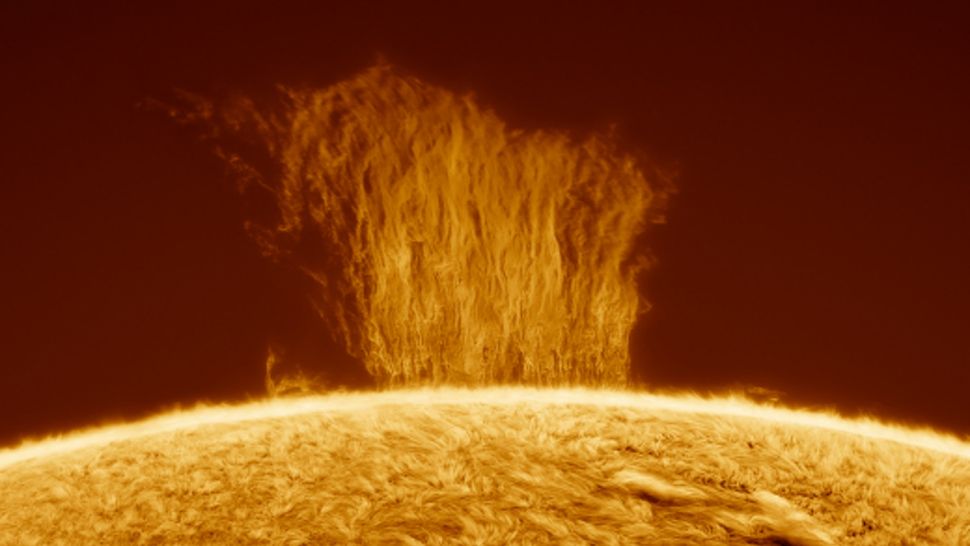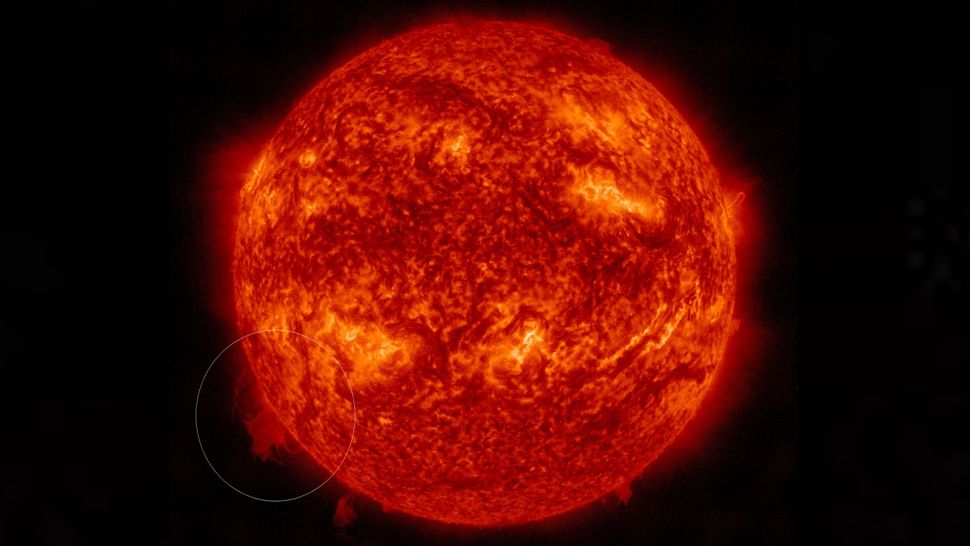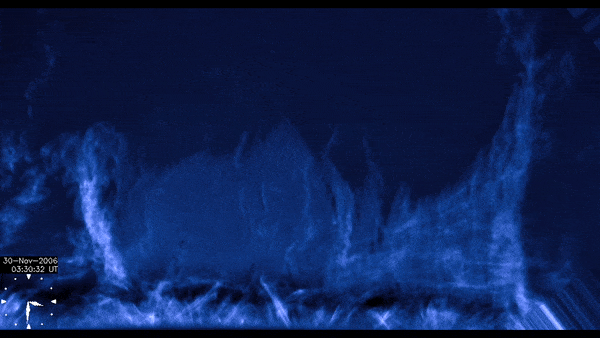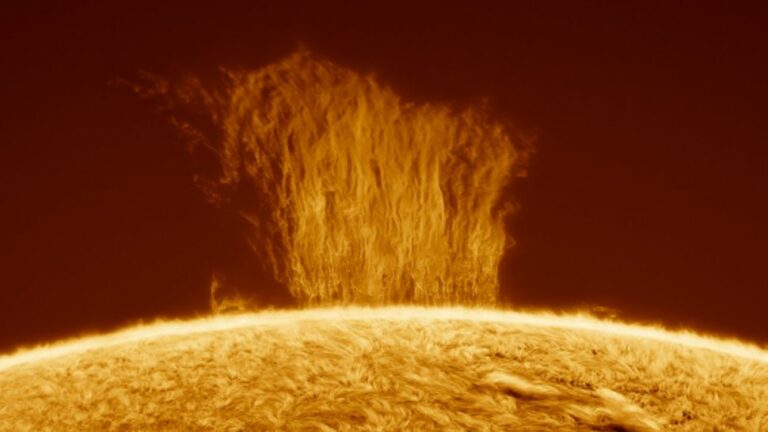Sun captured being showered by an impossibly fast fire from a 60,000-mile-tall ‘plasma waterfall
A massive wall of falling plasma, known as a polar crown prominence, was recently captured in a stunningly-detailed new photo of the sun.
A striking photograph has been captured by an astrophotographer depicting an enormous wall of plasma rapidly falling towards the solar surface after being ejected near the south pole of the sun. Eduardo Schaberger Poupeau, who is located in Argentina, took the image on March 9 using specialized camera equipment.

The wall of plasma, known as a polar crown prominence (PCP), rose about 62,000 miles above the surface of the sun, equivalent to the height of eight Earths stacked on top of each other. The PCP is similar to normal solar prominences, which are plasma loops ejected by magnetic fields from the sun’s surface. However, PCPs tend to occur near the sun’s magnetic poles at latitudes between 60 and 70 degrees North and South, often causing them to collapse back towards the sun due to stronger magnetic fields, earning them the nickname “plasma waterfalls.”

Although the plasma within PCPs remains within the magnetic field that initially expelled it, it is not technically in freefall. Nonetheless, NASA reports that the plasma descends rapidly at speeds of up to 22,370 mph (36,000 km/h), far exceeding the velocity that the magnetic fields should permit, leaving researchers perplexed. They are currently investigating how this is achievable.
Recently, a study was published in Frontiers in Physics in 2021, which disclosed that PCPs go through two stages during their eruptions: a sluggish phase, in which plasma ascends gradually, and a rapid phase, in which plasma accelerates towards the peak altitude. This finding may potentially impact the manner in which plasma returns to the surface, but further research is required to establish this.

Solar physicists frequently investigate solar prominences due to the possibility of coronal mass ejections, large plumes of magnetized plasma that can detach completely from the sun and collide with Earth. However, nuclear physicists are also interested in PCPs because the sun’s magnetic field appears to be exceptionally effective in confining plasma loops in the polar regions, offering potential insights for enhancing experimental nuclear fusion reactors.
According to NASA, PCPs occur frequently and could potentially happen almost every day, although instances such as the one captured by Poupeau are rare. However, as with many other plasma-related solar phenomena, the frequency and intensity of PCPs may increase during the sun’s 11-year solar cycle known as the solar maximum.
On February 2, a substantial solar prominence located just below the required latitude to qualify as a PCP broke off from the sun and became trapped in a vast and rapidly-moving polar vortex around the sun’s northern pole for approximately eight hours. Then, on September 5, 2022, an immense undulating stream of plasma reminiscent of a serpent surged across the sun’s surface. Finally, on September 24, 2022, a massive 1-million-mile-long plume of plasma erupted from the sun’s surface following the splitting of another prominence.
Do not forget to share your opinion with us to provide you with the best posts !




0 Comments